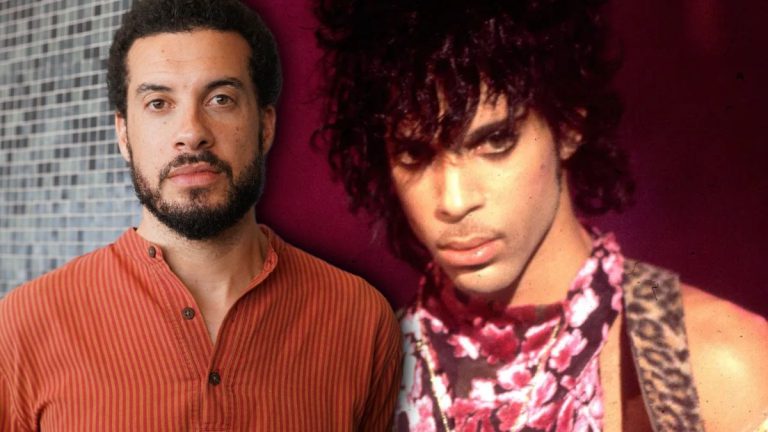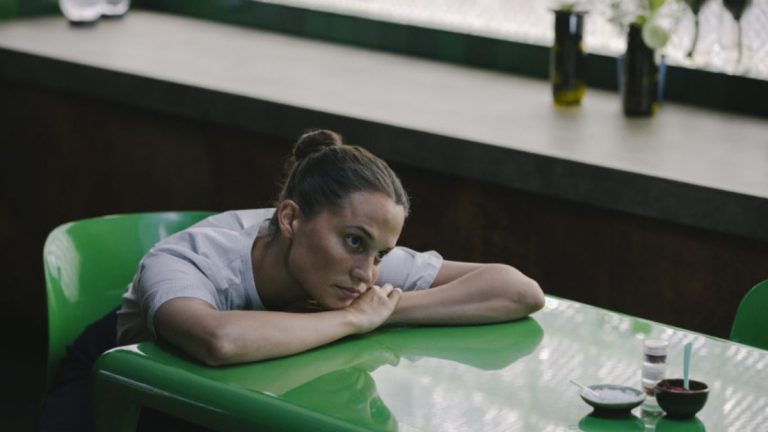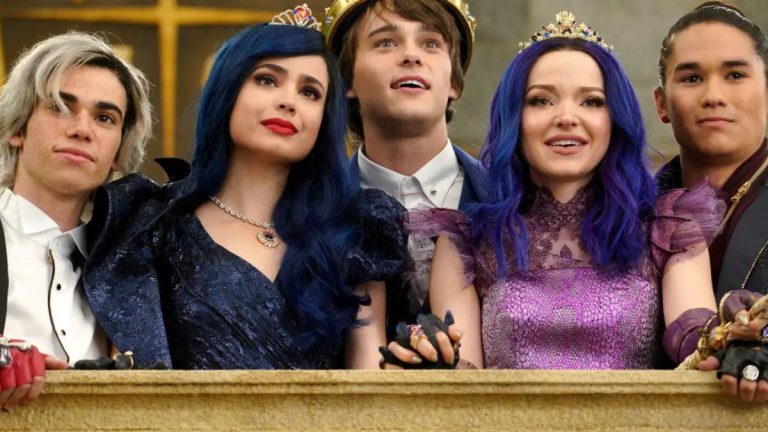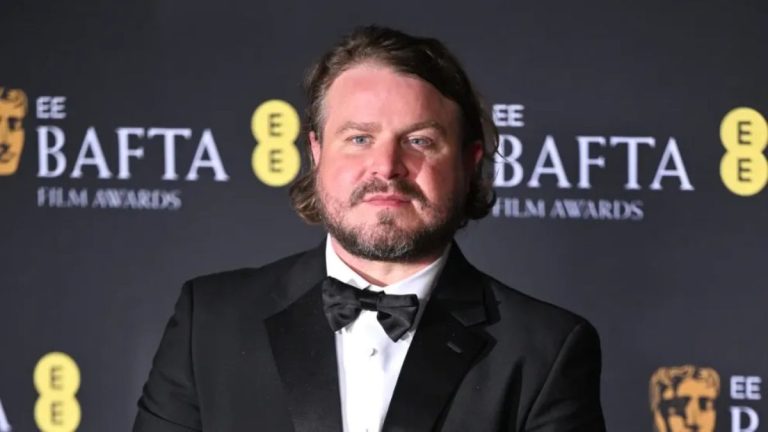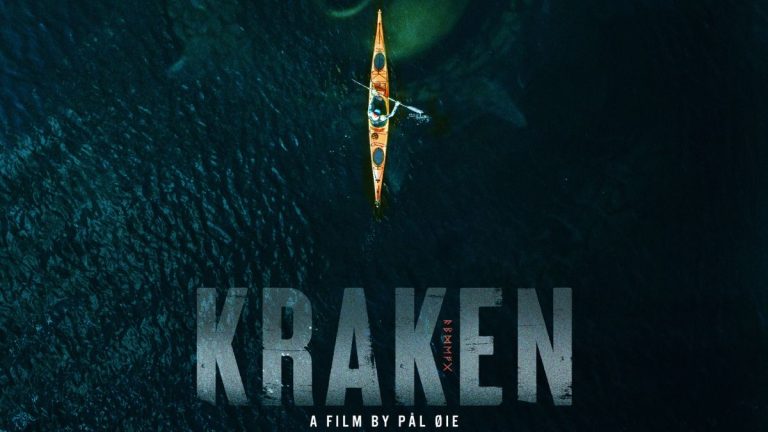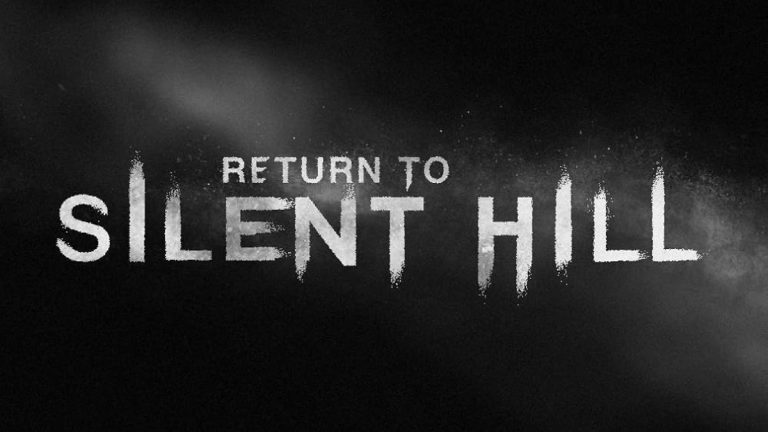Movies That Start With B: Alphabetical Adventures in Cinema
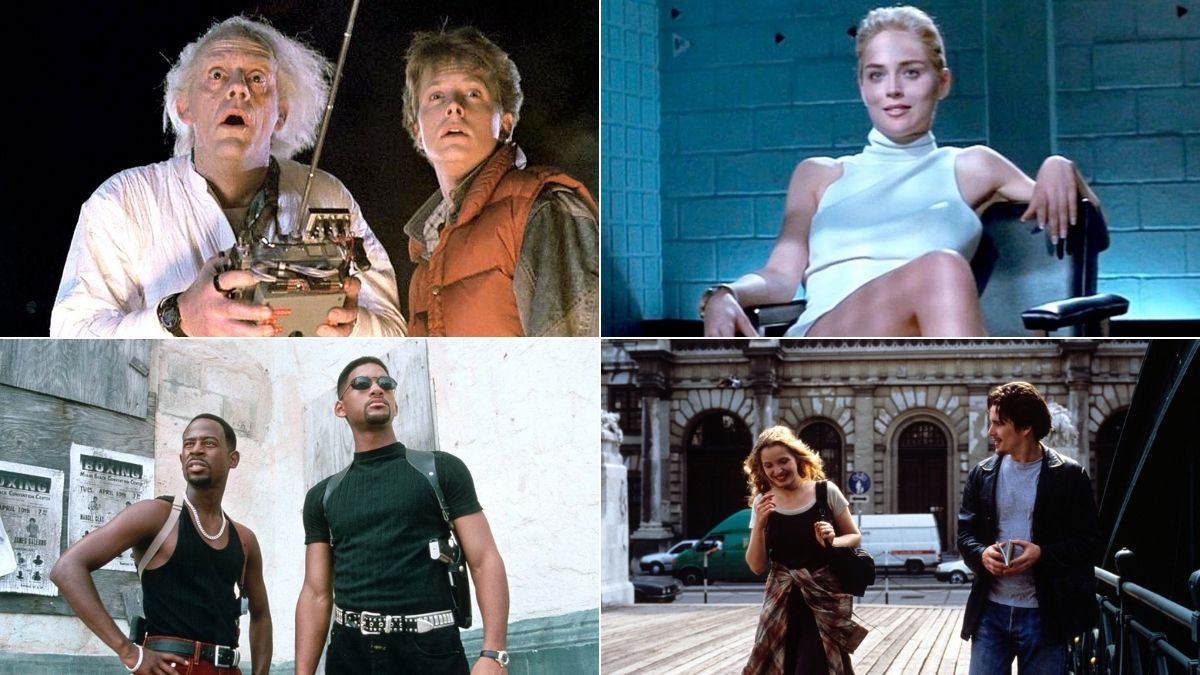
Diving into the vast ocean of cinema, every letter of the alphabet presents its own trove of cinematic treasures. As we embark on our alphabetical journey, we now find ourselves at the letter ‘B’. A letter that, in the world of film, has ushered in iconic tales, unforgettable characters, and remarkable narratives. From action-packed blockbusters to heartwarming dramas, let’s unravel the cinematic delights that movies starting with ‘B’ have to offer.
Babel
Babel, directed by Alejandro González Iñárritu and released in 2006, is an intricately woven narrative that brilliantly delves into the complexities of human connections across different cultures and continents. The film presents four distinct yet interrelated stories, set in Morocco, Japan, Mexico, and the United States, masterfully highlighting the barriers of communication and the chaos ensuing from misunderstandings.
The ensemble cast, featuring Brad Pitt, Cate Blanchett, and others, bring raw and poignant performances, elevating the movie’s impact. Babel underscores the universality of human emotions and our desperate need to communicate, even when language fails us.
The title “Babel” takes its inspiration from the biblical story of the Tower of Babel, symbolizing the divisions and misunderstandings among people. By weaving these stories together, Iñárritu powerfully addresses the pressing themes of globalization, alienation, and the fundamental human desire to connect.
The film’s nonlinear narrative demands attention but rewards viewers with a deep reflection on the interconnectivity of life, the fragility of human relationships, and the boundaries we often place around ourselves.
Baby Driver
Edgar Wright’s 2017 film, Baby Driver, is a refreshing take on the heist genre, brilliantly marrying high-octane action sequences with a toe-tapping soundtrack. The story revolves around Baby, played by Ansel Elgort, a talented young getaway driver with tinnitus, who relies on his personal soundtrack to drown out the ringing and to enhance his incredible driving skills. As he yearns to leave his life of crime, he realizes breaking free isn’t as simple as putting a car into drive.
The brilliance of Baby Driver lies not just in its exhilarating car chases but also in its meticulously choreographed scenes set to a diverse range of music tracks. From the opening sequence itself, Wright ensures the audience is buckled in for a rhythmic, heart-pounding ride.
The film delves into themes of love, freedom, and redemption, while also showcasing the inextricable link between music and emotion, driving home the idea that sometimes life requires the perfect soundtrack to make sense.
Back to the Future
Back to the Future, released in 1985 and directed by Robert Zemeckis, is an iconic blend of science fiction, comedy, and adventure, that has cemented its place in pop culture. The movie introduces us to Marty McFly, played by Michael J. Fox, a teenager who inadvertently travels 30 years into the past using a time-traveling DeLorean car invented by his eccentric friend, Doc Brown.
Once in the past, Marty’s actions have unintended consequences on his family’s future, leading to a series of delightful and chaotic attempts to set things right.
A masterclass in storytelling, the film manages to weave complex temporal concepts with humor, emotion, and intrigue. Its enduring charm is evident in its ability to resonate with multiple generations of viewers, exploring themes of destiny, the impact of choices, and the timeless nature of human relationships.
Alan Silvestri’s memorable score and the undeniable chemistry between Michael J. Fox and Christopher Lloyd make “Back to the Future” not just a film, but a cinematic experience that stands the test of time.
Bad Boys
The dynamic duo of Will Smith and Martin Lawrence burst onto the big screen in the 1995 action-comedy, Bad Boys. Directed by Michael Bay, the film follows Miami detectives Mike Lowrey (Smith) and Marcus Burnett (Lawrence) as they embark on a mission to retrieve stolen drugs from a ruthless French drug lord.
Amidst the high-speed chases and gunfights, the film is underscored by the comedic camaraderie and banter between the two protagonists, offering viewers an explosive mix of action and humor.
Bad Boys effectively showcases Michael Bay’s signature style of filmmaking – flashy visuals, swift cuts, and massive set pieces. However, it’s the chemistry between Smith and Lawrence that truly drives the film. Their impeccable comedic timing and natural rapport make the audience invest in their friendship, even amidst the chaos unfolding on screen.
Themes of loyalty, brotherhood, and the gray areas of morality are explored, making Bad Boys more than just an action-packed joyride; it’s a testament to the bonds that form in the line of duty.
Badlands
Terrence Malick’s directorial debut, Badlands, released in 1973, is a haunting portrayal of aimless youth, crime, and the allure of the American landscape. Inspired by real-life events, the film follows a young couple, Kit and Holly, played by Martin Sheen and Sissy Spacek, respectively, as they embark on a violent spree across the South Dakota badlands.
Narrated by Holly, her innocent voice juxtaposes the senseless violence perpetuated by Kit, creating an eerie and mesmerizing atmosphere.
Malick’s distinct style is evident in Badlands – the lingering shots of the natural landscape, the introspective voiceovers, and the emphasis on the mood over narrative progression. The film is as much a contemplation on the vastness and beauty of America as it is a chilling character study of its protagonists.
Themes of infatuation, the allure of notoriety, and the indifference of nature to human deeds are explored with poetic beauty. Badlands stands as a profound exploration of the dark underbelly of the American dream and the blurred lines between innocence and malevolence.
Bambi
Bambi, released in 1942, is one of Disney’s most enduring and evocative classics. The film beautifully chronicles the life of a young deer, Bambi, as he navigates the wonders and perils of the forest. With its exquisite animation, the film offers a tender exploration of the themes of childhood, friendship, loss, and the cycle of life.
From playful moments with friends Thumper and Flower to the heart-wrenching loss of his mother, Bambi’s journey is one of growth, understanding, and resilience. The film’s portrayal of nature—both its beauty and brutality—presents a layered narrative that resonates with both children and adults.
Bambi’s significance extends beyond its storytelling. The film’s animation was groundbreaking for its time, capturing the nuances of the natural world in breathtaking detail. The forest, with its changing seasons and diverse inhabitants, becomes a character in its own right, reflecting the emotions and experiences of its protagonists.
Moreover, the film’s poignant moments, particularly the death of Bambi’s mother, have left an indelible mark on popular culture, often cited as one of cinema’s most emotional sequences. Through Bambi, Disney gifted audiences a contemplative exploration of life’s fragility and the enduring power of hope.
Bandits
Bandits, a 2001 crime-comedy film directed by Barry Levinson, features Bruce Willis, Billy Bob Thornton, and Cate Blanchett in a quirky tale of bank robbers and unexpected love. Willis and Thornton play Joe and Terry, respectively, two convicts who escape prison and embark on a series of bank heists.
Their unique modus operandi involves kidnapping bank managers and robbing the banks early in the morning. However, things take a turn when they encounter Kate, played by Blanchett, leading to a love triangle that adds layers of complexity to their criminal escapades.
While the heists and chases are integral to Bandits, it’s the character dynamics and the unexpected romance that truly drive the film. Thornton’s portrayal of the neurotic Terry contrasts brilliantly with Willis’s suave and daring Joe, making their interactions a comedic highlight.
Blanchett’s Kate adds depth and unpredictability to the mix, resulting in a delightful interplay of emotions and motives. The film effectively combines the thrill of crime with the intricacies of relationships, presenting a narrative that’s as heartwarming as it is adventurous.
Barbarella
Barbarella, the 1968 sci-fi film directed by Roger Vadim, is a vibrant and sensual journey into a fantastical future. Based on the French comic book series of the same name, the film stars Jane Fonda as the titular character, a space-faring agent sent on a mission to find a missing scientist and his groundbreaking invention.
Set in a distant future where war and aggression are things of the past, Barbarella’s odyssey takes her through a series of bizarre and often perilous adventures, filled with eccentric characters and imaginative set pieces.
The film, with its campy aesthetic and psychedelic visuals, is emblematic of the 1960s’ cultural zeitgeist. Barbarella is both a product of its time and a timeless exploration of sexuality, freedom, and empowerment. Fonda’s portrayal of the protagonist is iconic, blending innocence with allure, making Barbarella a character that’s both relatable and aspirational.
The film’s legacy is evident in its influence on later sci-fi works and its enduring status as a cult classic. With its mix of humor, adventure, and sensuality, Barbarella remains a unique cinematic experience that celebrates the boundless possibilities of the future.
Barefoot in the Park
Barefoot in the Park, a 1967 romantic comedy directed by Gene Saks and based on the play by Neil Simon, shines a light on the joys, challenges, and quirks of newlywed life. The film centers around Corie (Jane Fonda) and Paul Bratter (Robert Redford), a young couple who, after their honeymoon, move into a New York City apartment that’s rife with its own set of peculiarities.
As they navigate the early days of their marriage, the couple’s contrasting personalities lead to comedic confrontations, insights, and ultimately, deeper understanding.
Set against the backdrop of a bustling and vibrant New York, Barefoot in the Park is a delightful exploration of love, compatibility, and compromise. Simon’s razor-sharp wit and humor shine through, making the narrative both relatable and entertaining. Fonda and Redford’s on-screen chemistry is palpable, bringing authenticity and charm to their characters’ dynamics.
Beyond its comedic elements, the film also delves into the complexities of relationships, highlighting the importance of communication, understanding, and adaptability. Through its endearing characters and heartfelt moments, Barefoot in the Park stands as a testament to the trials and tribulations that pave the path to lasting love.
Basic Instinct
Basic Instinct, a 1992 erotic thriller directed by Paul Verhoeven, captivated audiences with its intricate plot, steamy scenes, and compelling characters. The narrative revolves around San Francisco detective Nick Curran, played by Michael Douglas, as he investigates a brutal murder.
The prime suspect is Catherine Tramell, a captivating and enigmatic novelist portrayed by Sharon Stone. As Curran delves deeper into the investigation, he becomes entangled in a seductive and dangerous game with Tramell, blurring the lines between desire, obsession, and truth.
The film’s strength lies in its ability to maintain a balance between sensuality and suspense. Stone’s portrayal of Catherine Tramell is iconic, marking her as one of the most unforgettable femme fatales in cinematic history. Verhoeven’s direction, combined with Joe Eszterhas’s script, crafts a narrative that keeps the audience on the edge of their seats, constantly questioning the characters’ motives and the reality of the situation.
Beyond its thriller elements, Basic Instinct also delves into the complexities of human psychology, exploring themes of control, manipulation, and vulnerability. The film, with its controversial scenes and bold storytelling, remains a significant entry in the annals of 90s cinema, challenging conventions and redefining the boundaries of the thriller genre.
Batman
Batman, a superhero name synonymous with the dark, brooding vigilante of Gotham City, has been a mainstay in popular culture since his comic book inception in 1939. Tim Burton’s 1989 film, simply titled “Batman”, gave a cinematic rebirth to this iconic character, introducing audiences to a darker and more complex Batman, played with depth by Michael Keaton.
Gotham’s gothic and almost otherworldly landscape serves as the battleground where Batman confronts the Joker, a maniacal villain portrayed with memorable zeal by Jack Nicholson. The film brilliantly juxtaposes Batman’s quest for justice with the Joker’s chaotic and anarchic nature, painting a picture of two damaged souls locked in perpetual conflict.
While the Batman lore had been translated to the screen prior to Burton’s rendition, this version was a game-changer. Its dark tone, combined with Danny Elfman’s haunting score, created a world that was both familiar and refreshingly novel to fans. The film delves into the psyche of Bruce Wayne, exploring the trauma and responsibility that birthed Batman.
Furthermore, it addresses the thin line between heroism and madness, a theme recurrent in Batman narratives. This film laid the groundwork for numerous sequels, reboots, and an entire universe of superhero cinema, proving that comic book stories could be both commercially successful and artistically significant.
Battle of the Sexes
“Battle of the Sexes,” directed by Jonathan Dayton and Valerie Faris in 2017, dives into the real-life tennis match between Billie Jean King and Bobby Riggs in 1973. The match, hyped as a showdown between genders, captured global attention, becoming a symbolic contest amidst the rising women’s liberation movement.
The film, with Emma Stone playing King and Steve Carell as Riggs, goes beyond the tennis court, exploring the personal and professional challenges faced by both players. For King, it’s a fight for equality and her own burgeoning sexual identity. For Riggs, it’s a last grasp at relevance and a bid to prove his worth.
The strength of “Battle of the Sexes” lies in its ability to intertwine personal narratives with broader socio-political issues. While the titular tennis match serves as the film’s climax, it’s the buildup – the behind-the-scenes struggles, the blatant sexism, and the personal revelations, that give the story its depth.
Stone and Carell deliver nuanced performances, humanizing these larger-than-life characters. The film underscores the importance of standing up for one’s beliefs, the challenges of personal authenticity, and the enduring struggle for equality in sports and beyond.
Beaches
Released in 1988 and directed by Garry Marshall, “Beaches” is a poignant exploration of friendship, love, and the inevitable passage of time. The film, spanning several decades, delves into the deep and often tumultuous friendship between C.C. Bloom, an aspiring singer portrayed by Bette Midler, and Hillary Whitney, a lawyer played by Barbara Hershey.
Their bond, though tested by differences in background, ambition, and tragedy, remains unbreakable, painting a heartfelt picture of the lengths and depths true friendship can reach.
“Beaches” is as much a story about individual dreams and struggles as it is about the power of relationships. Through moments of joy, heartbreak, success, and failure, the film underscores the idea that life’s truest measure is the connections we forge and nurture.
Midler’s performance, particularly her rendition of the song “Wind Beneath My Wings,” adds a layer of emotional resonance to the narrative, making “Beaches” an enduring tale that celebrates the complexities and beauties of human relationships.
Bean
“Bean,” directed by Mel Smith and released in 1997, brings the iconic British sitcom character Mr. Bean, played by the inimitable Rowan Atkinson, to the big screen. Mr. Bean, a bumbling and mostly silent character, finds himself inadvertently causing chaos at a prestigious Los Angeles art gallery, turning what should be a straightforward task into a series of comedic misadventures.
The film expands on the character’s traditional skits, weaving a narrative that introduces Bean to a new audience while retaining the humor and charm that made the original series a success.
Atkinson’s physical comedy is at the heart of “Bean.” His ability to convey a multitude of emotions without uttering a word, combined with his knack for slapstick, ensures that Mr. Bean’s antics elicit consistent laughter.
The movie navigates cultural differences, misunderstandings, and the universal human tendency towards misadventure. Through its lighthearted exploration of these themes, “Bean” showcases the power of humor to bridge gaps, heal misunderstandings, and celebrate the quirky imperfections that make us human.
Beauty and the Beast
“Beauty and the Beast,” Disney’s 1991 animated classic, is a tale as old as time, bringing to life the enchanting story of Belle, a young woman who finds herself in an enchanted castle with a beast and his magical staff. Beyond its captivating animation and memorable songs, the film is a testament to the transformative power of love, understanding, and acceptance.
Belle, with her love for books and her fierce independence, challenges the Beast’s initial gruffness and hostility, revealing the kind-hearted prince trapped within.
This film stands out not just for its animation and storytelling, but for its groundbreaking achievements in film. “Beauty and the Beast” became the first animated feature to be nominated for Best Picture at the Academy Awards, solidifying animation’s place in serious cinematic discourse.
The characters, from the charming Lumière to the stern Cogsworth, breathe life into the castle’s cold walls, while the central romance tugs at the heartstrings. Alan Menken and Howard Ashman’s score, especially songs like “Be Our Guest” and the title track “Beauty and the Beast,” elevate the narrative, making the film an enduring masterpiece in the realm of animation and beyond.
Becket
“Becket,” directed by Peter Glenville and released in 1964, is a cinematic exploration of friendship, faith, and power, set against the backdrop of medieval England. Adapted from the play by Jean Anouilh, the film revolves around the complex relationship between King Henry II, portrayed by Peter O’Toole, and Thomas Becket, played by Richard Burton.
Once close friends, their bond is tested when Becket is appointed Archbishop of Canterbury. The movie delves deep into the transformation of Becket from a loyal, hedonistic companion of the king to a devout and principled spiritual leader, creating an inevitable collision between church and state.
“Becket” stands out not only for its rich historical narrative but also for its sharp dialogue and riveting performances. O’Toole and Burton’s on-screen chemistry brings to life the nuances of their characters’ changing dynamics, from camaraderie to conflict.
The film delves into the age-old tussle between personal desires and public duties, between secular power and spiritual authority. With its grand set pieces, intricate character studies, and an atmosphere brimming with tension, “Becket” serves as a masterclass in historical drama, capturing the essence of a time when crowns and mitres vied for supremacy.
Beetlejuice
Tim Burton’s “Beetlejuice,” released in 1988, is a darkly comedic foray into the supernatural, blending humor with macabre themes. When a recently deceased couple, played by Geena Davis and Alec Baldwin, find themselves haunting their former home, they seek the services of Beetlejuice, a mischievous and unpredictable bio-exorcist portrayed with glee by Michael Keaton. What follows is a roller coaster of spectral antics, quirky characters, and a striking visual aesthetic that only Burton could envision.
The magic of “Beetlejuice” lies in its ability to take the theme of the afterlife—a traditionally somber topic—and turn it into a whimsical, yet haunting, spectacle. The film’s unique set designs, vibrant characters, and memorable score by Danny Elfman contribute to its cult status.
Keaton’s portrayal of the titular character, with his chaotic energy and irreverent humor, remains iconic. The narrative challenges perceptions of life and death, making audiences ponder the boundaries of the known and the unknown, all while delivering laughs and visually captivating scenes.
Before Sunrise
“Before Sunrise,” directed by Richard Linklater and released in 1995, is a poetic exploration of connection, conversation, and fleeting moments. The narrative unfolds over a single night in Vienna, where two strangers, Jesse (Ethan Hawke) and Celine (Julie Delpy), meet on a train and decide to spend the evening together.
What follows is a series of deep conversations, wanderings, and moments of genuine connection, framed against the backdrop of the city’s nocturnal beauty.
The beauty of “Before Sunrise” is its simplicity. There’s no grand plot or dramatic twists; instead, the film focuses on genuine human connection, the kind that’s unexpected and profound. The chemistry between Hawke and Delpy is palpable, making every conversation, whether light-hearted or profound, feel authentic.
Linklater masterfully captures the essence of transient romance, the kind that’s bound by time yet feels timeless. It’s a testament to the idea that sometimes the most significant connections are those that happen serendipitously, in the brief intersections of two wandering paths.
Being John Malkovich
Directed by Spike Jonze and penned by Charlie Kaufman, “Being John Malkovich,” released in 1999, is a surreal journey into the realms of identity, consciousness, and desire. The story follows Craig Schwartz (John Cusack), a puppeteer who discovers a portal in his office building that allows anyone to enter and experience the world through the eyes of actor John Malkovich. This bizarre premise unravels into a series of comedic, philosophical, and often unsettling events, blurring the lines between self and other.
The genius of “Being John Malkovich” lies in its ability to blend the absurd with the profound. On the surface, it’s a dark comedy filled with eccentric characters and scenarios, but beneath this, it raises poignant questions about individuality, existence, and the nature of the self.
The film’s unique narrative structure, combined with standout performances from Cusack, Cameron Diaz, and Malkovich himself, creates an unforgettable cinematic experience. Challenging the conventions of storytelling, this film stands as a testament to the endless possibilities of cinema and the depths to which it can delve into the human psyche.
Beloved
Based on Toni Morrison’s Pulitzer Prize-winning novel, “Beloved,” directed by Jonathan Demme and released in 1998, is a haunting exploration of the scars of slavery on the African American psyche. The narrative follows Sethe (Oprah Winfrey), a former slave, as she grapples with her traumatic past and the mysterious presence of a young woman named Beloved (Thandie Newton) who comes into her life. Set against the backdrop of post-Civil War America, the film delves deep into themes of memory, trauma, love, and redemption.
“Beloved” is a powerful cinematic experience, interweaving the personal with the historical. The traumas of slavery, the longing for freedom, and the ghosts of the past are all vividly brought to life through compelling performances and a narrative that doesn’t shy away from the harrowing realities of its subject matter.
Winfrey’s portrayal of Sethe is raw and poignant, embodying the pain, strength, and resilience of countless individuals who bore the weight of history. The film serves as a stark reminder of the haunting legacy of slavery and the enduring spirit of those who fought against it.
MORE FROM VOICE FILM

